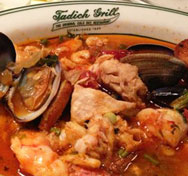Crab on Platter
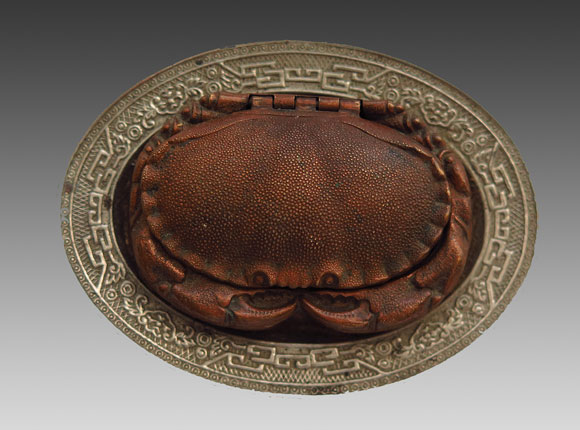
Needle Case without gilding
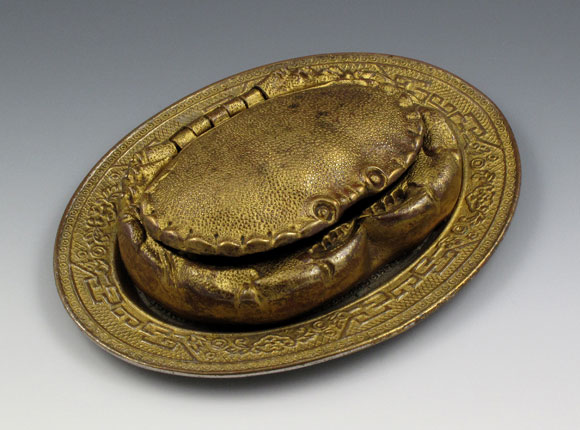
Needle Case with gilding
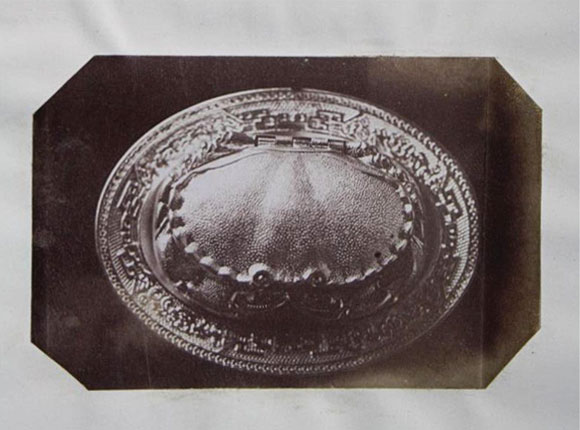
Design Representation
Design Details
Needle Case Type: |
Figural (not listed on design registration as a needle case) |
Patent/Registered to: |
Buncher & Haseler - Birmingham |
Patent/Design Representation #: |
Rd30180 |
Patent/Design Registration Date: |
July 21, 1885 |
Location of Patent/Design Registration: |
The National Archives (TNA) - Kew, UK |
Reference #: |
TNA Representation - BT 50/39/30180
TNA Register - BT 51/15/30180 |
Dimensions: |
8.3 x 6.3 x 1.5 |
Material: |
Brass with nickel-silver platter |
Name Variations: |
W. Avery & Son - Redditch |
Other Variations: |
Brass with nickel-silver platter and painted gilt top exterior |
Additional Photographs
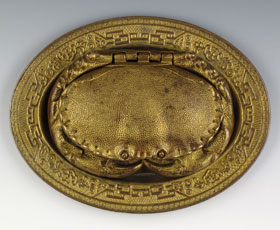
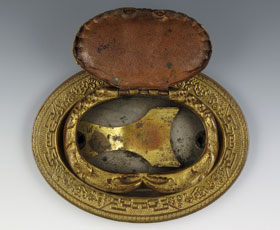
Gilded top closed and open. The interior of the platter and the inside of the lid are not gilded.
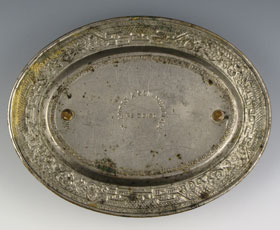
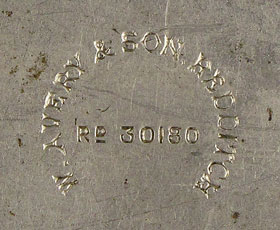
Bottom of the nickel-silver platter showing a small area on the left side that contains some of the gilt that appears to have been painted onto
the upper exterior portion of the design and the Avery signature detail
Facts
The crab is a crustacean that can be found in the oceans of every continent. In general they are covered by a thick shell and have
eight legs and a single pair of claws. The world’s largest is the Japanese spider crab which has a 12 ft. leg span and weights up to
42 pounds. The pea crab is the smallest measuring about a fourth of an inch. Edible crab is considered a delicacy and is served
in many different ways. In the US dungeness crab comes from the Pacific Northwest whereas blue crab comes for the Gulf of Mexico and the
Chesapeake Bay area. The brown crab is found in the North Sea and North Atlantic and is a popular dish in Cromer, England.
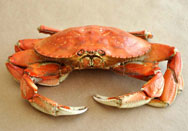
History
The town of Cromer, a coastal town in the county of Norfolk, England has been famous for its crab for centuries. In the early 19th century
it became a resort, luxury hotels were built, and by the late 19th century an elaborate pier was added. Fishing boats lined the beaches
east and west of the pier and some said all one needed to do was to drop a line in the water from the pier to retrieve one of the
crabs. When the author Sir Arthur Conon Doyle visited the area in 1901 he heard the stories about the Black Shuck, a ghostly black dog
that allegedly roamed the coastline. It is believe that this was the inspiration for his Victorian classic novel “The Hound of the
Baskervilles”.
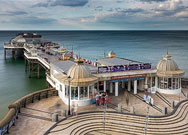
Cromer Pier today
Miscellaneous
Whereas crab cakes are the signature dish of the Chesapeake Bay area in the US, cioppino is king in San Francisco. Cioppino is a
seafood stew that was created by an Italian immigrant to San Francisco in the late 19th century. This dish is made with fresh tomatoes
in a wine sauce mixed with a variety of fresh seafood including dungeness crab, clams, shrimp, scallops, squid, mussels and fish. It is
served with toasted sourdough bread. The best cioppino is found at the Tadich Grill in the Financial District which just happens to be
the oldest restaurant in San Francisco and in California.
